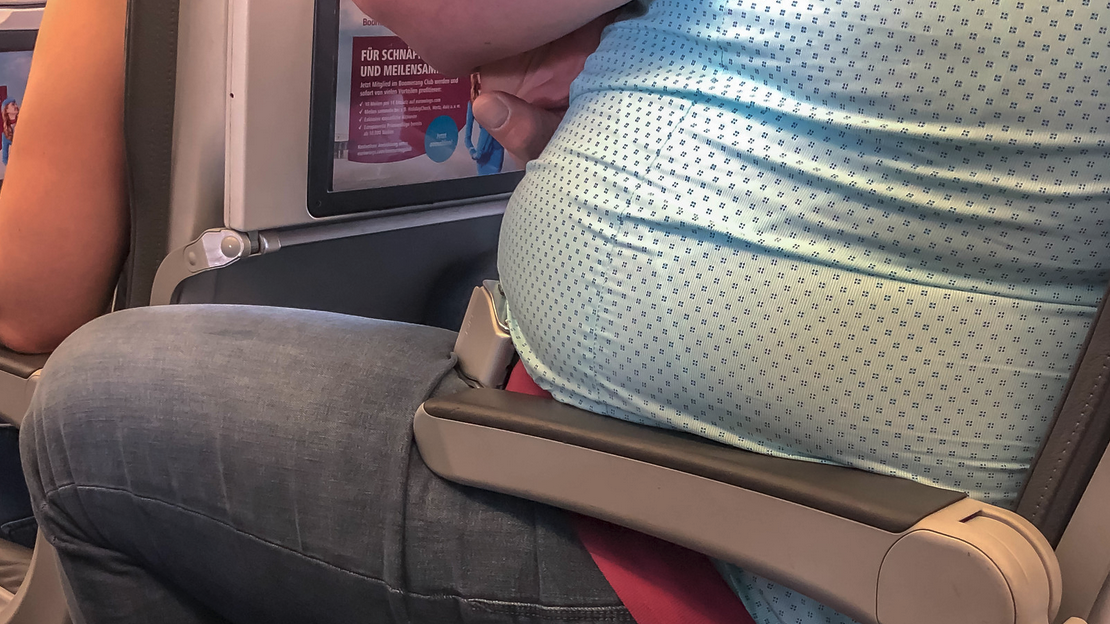Fitting comfortably in an airplane seat is a concern for many travelers, especially larger passengers. With airlines trying to squeeze in more seats, legroom and seat width continue to shrink. So can a 300 lb person fit in a standard coach airline seat?
Read on as we take an in-depth look at seat dimensions, airline regulations, and tips for large travelers to hopefully find space and comfort when flying.
If you’re pressed for time, the short answer is: it depends. While a 300 lb person can technically fit into a standard coach seat, they will likely feel very cramped and uncomfortable on most flights.
In this comprehensive guide, we’ll cover average airline seat dimensions, rules around seatbelt extenders, whether you have to purchase an extra seat, and tips for maximizing space and comfort as a plus-size flyer.
What Are the Dimensions of Airline Seats?
When it comes to air travel, one of the common concerns for passengers is the size of the seats. Airlines have different seat dimensions, and it’s important for passengers to know what to expect before booking their flights.
Seat Width
The seat width is a crucial factor in determining the comfort level of a passenger during a flight. Generally, the width of an economy class seat can range from 17 to 19 inches.
However, it’s important to note that the actual seat width may vary between different airlines and aircraft models.
Some airlines offer wider seats in their premium economy or business class sections, which can provide more space and comfort for passengers.
These seats may have a width of up to 22 inches or even more, depending on the airline and aircraft.
Seat Pitch
The seat pitch refers to the distance between one point on a seat to the same point on the seat in front or behind it. It is a key factor in determining legroom and overall comfort during a flight.
The seat pitch can vary significantly between airlines and aircraft models.
In economy class, the seat pitch typically ranges from 28 to 34 inches. However, some airlines offer seats with extra legroom, often referred to as “economy plus” or “economy comfort” seats.
These seats may have a seat pitch of 36 inches or more, providing more space for taller passengers or those who prefer extra legroom.
How Seat Size Varies Between Airlines and Aircraft
It’s important to note that seat dimensions can vary between airlines and even within the same airline, depending on the aircraft model.
For example, a Boeing 737 may have different seat dimensions compared to an Airbus A320.
Additionally, some airlines may offer different seat sizes depending on the route or flight duration.
For long-haul flights, airlines often provide more spacious seats to enhance passenger comfort during extended periods in the air.
If you want to check the specific seat dimensions for a particular airline or aircraft, you can visit their official website or refer to dedicated travel websites that provide comprehensive information about airline seat sizes.
Remember, being aware of the seat dimensions can help you make an informed decision when booking your flight, especially if you are concerned about fitting comfortably in an airline seat.
Do Airlines Have Weight Limits or Require Extra Seats?
When it comes to air travel, one common concern for individuals who are overweight or obese is whether they will be able to comfortably fit in an airline seat. The truth is, airlines do not have specific weight limits for passengers.
However, they do have policies in place to ensure the safety and comfort of all passengers on board.
Rules Around Requiring Extra Seats
Most airlines have a policy that if a passenger’s body extends beyond the width of the seat, they may be required to purchase an additional seat.
This is to ensure that both the passenger and neighboring passengers have enough space to sit comfortably throughout the flight.
While it may seem like an inconvenience, this policy is in place to prioritize the comfort and safety of all passengers on board.
For example, let’s say a person weighs 300 lbs and their body extends beyond the width of a standard airline seat. In this case, they may be required to purchase an extra seat to ensure they have enough space.
It is important to note that the specific policies regarding requiring extra seats may vary between airlines. Some airlines may have more lenient policies, while others may have stricter guidelines.
It is always a good idea to check with the airline directly to understand their specific policies and requirements.
Seatbelt Extenders
Another concern for individuals who are larger in size is whether they will be able to fasten the seatbelt. Airlines typically provide seatbelt extenders for passengers who require them.
These extenders are designed to accommodate passengers with larger waistlines, allowing them to securely fasten their seatbelt during the flight.
The flight attendants are trained to assist passengers in a discreet and respectful manner, ensuring that their needs are met without any embarrassment or discomfort.
It’s important to remember that airlines have these policies in place to prioritize the comfort and safety of all passengers.
By following these guidelines, passengers can have a more enjoyable and stress-free flight experience.

Tips for Flying Comfortably as a Plus Size Passenger
Try to Get a Seat with More Legroom
For plus size passengers, having enough legroom can make a significant difference in comfort during a flight. When booking your seat, try to choose one that offers more legroom.
Some airlines offer seats with extra legroom for an additional fee, or you may be able to select an exit row seat, which generally provides more space.
It’s worth checking the airline’s website or contacting their customer service to inquire about these options.
Request a Seat Belt Extender Ahead of Time
If you anticipate that the regular seat belt on the airplane might not fit comfortably around you, it’s a good idea to request a seat belt extender ahead of time.
Most airlines have seat belt extenders available for passengers who need them.
Contact the airline’s customer service before your flight and let them know your requirements. This way, you can ensure that the necessary equipment will be available to you when you board the plane.
Travel in Comfortable, Breathable Clothing
Choosing the right clothing can greatly enhance your comfort during the flight. Opt for loose-fitting, breathable fabrics that allow for ease of movement.
Avoid wearing tight or restrictive clothing that can make you feel uncomfortable or constricted during the flight.
Additionally, consider wearing layers, as the temperature on the plane can vary throughout the journey.
Stay Hydrated
It’s important to stay hydrated during a flight, regardless of your size. Dehydration can make you feel tired and uncomfortable, so be sure to drink plenty of water before, during, and after the flight.
Avoid excessive consumption of alcohol or caffeinated beverages, as they can further contribute to dehydration.
Bringing a refillable water bottle with you is a great way to ensure you have access to water throughout the journey.
Summary and Key Takeaways
When it comes to air travel, one common concern for individuals who are overweight or obese is whether they will be able to comfortably fit in an airline seat.
Although there is no one-size-fits-all answer to this question, there are some key takeaways to consider.
1. Airlines’ Seat Sizes and Policies
Airlines have different seat sizes and policies regarding passengers who may require additional space. Most airlines have a standard seat width of around 17-18 inches.
However, it’s important to note that the space available for each passenger can vary depending on the aircraft and airline.
Some airlines offer wider seats or extra legroom for an additional fee. It’s a good idea to check with the airline beforehand to understand their specific policies and options.
2. Requesting a Seat Belt Extender
If a passenger finds that they cannot comfortably fasten their seat belt due to their size, they can request a seat belt extender from the flight attendants.
Seat belt extenders are designed to provide additional length and ensure a secure fit. Airlines typically have these extenders available for passengers who need them.
3. Purchase an Additional Seat
In some cases, individuals who are unable to fit comfortably in a standard airline seat may choose to purchase an additional seat.
This option provides more space and ensures a more comfortable flying experience.
It’s important to check with the airline about their policies regarding purchasing an extra seat.
4. Consider Different Airlines
If fitting into a standard airline seat is a concern, it may be worth considering different airlines. Some airlines are known for offering larger seat sizes or more spacious seating arrangements.
Researching and comparing different airlines can help find the best option for a comfortable flying experience.
5. Preparing for the Flight
For individuals who are concerned about fitting into an airline seat, there are a few steps they can take to prepare for the flight. Wearing comfortable and loose-fitting clothing can help increase comfort during the journey.
Additionally, practicing good posture and taking short walks during layovers can help minimize discomfort.
Conclusion
While cramped airline seating is a nuisance for all passengers, the issue is particularly pronounced for plus size travelers.
If you’re over 300 pounds, staying as informed as possible about seat dimensions, airline policies, and strategies for maximizing comfort is key to having a decent flying experience.
At the end of the day, a 300 lb person can physically fit into a standard coach seat on most airlines. However, it will likely be an extremely tight and uncomfortable squeeze.
Focusing on choosing the right aircraft, getting a roomier seat, and utilizing seat belt extenders and other accommodations can help take some of the stress out of flying while plus sized.






